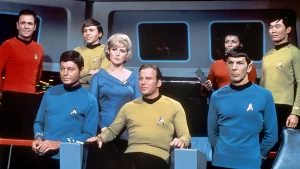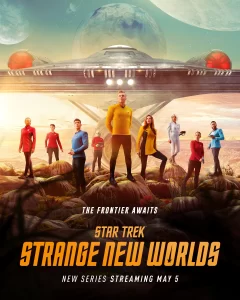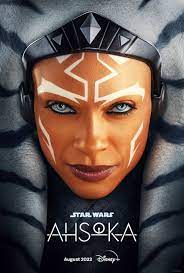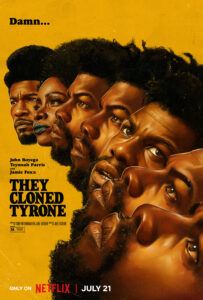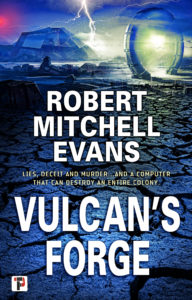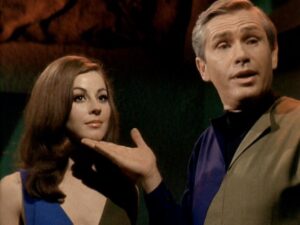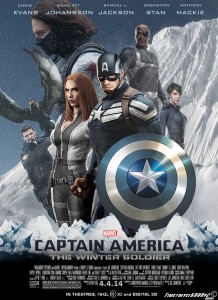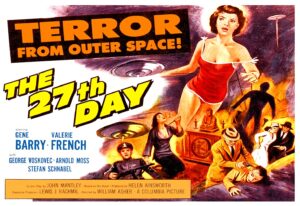.
So, time was running late, and I wanted something I hadn’t seen before that ran for under an hour and a half. Scrolling through the options on Amazon Prime I stumbled across Space Probe: Taurus, clearly a cheesy, low-budget, bit of fare. I went in with low expectations which the film failed to meet by lightyears.
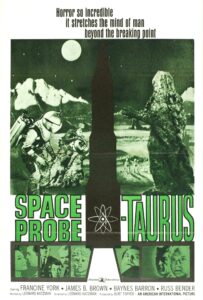 Space Probe: Taurus (SPT) has a script that appears to have been written by a terrible pantser. That is someone who doesn’t outline first but discovers their characters and plot as they write and usually then has several ‘clean-up’ passe to sculp everything into a coherent story. SPT never achieves anything approaching coherence in its plotting. The movie is a series of events that bear little to no relation to each other or any sort of overall plot or theme.
Space Probe: Taurus (SPT) has a script that appears to have been written by a terrible pantser. That is someone who doesn’t outline first but discovers their characters and plot as they write and usually then has several ‘clean-up’ passe to sculp everything into a coherent story. SPT never achieves anything approaching coherence in its plotting. The movie is a series of events that bear little to no relation to each other or any sort of overall plot or theme.
We start with a failed space expedition, Faith One, (This script has made me feel so much better about my poor naming talents.) which has ended in disaster and to prevent the spread of infection at the sole survivor’s begging is self-destructed by remote. We never mention that incident nor return to or even attempt to return to that location again.
After stock footage of various Atlas launches, we join with the new mission, going to a new place, Hope One (Hope for what? I don’t know it’s never explored.) on route to Taurus. The crew would have been cliched a decade earlier, the gruff, tough as nail, male Commander, the flippant, womanizing second, the older, wiser, and more levelheaded senior scientist, and the very attract female scientist there to ‘do science’ and get everyone their meals.
Shortly after launch, because the writer/director has literally no conception of the size of space, they encounter an alien ship floating free in space. Hard as nails commander and flippant guy board, meet an alien who attacks them and, after killing the alien then flee back to their ship. Before departing they plant a friggin’ bomb on the alien ship and destroy it. This incident will never again be referenced or have any effect on the continuing adventure.
There follows some terrible interpersonal interaction scenes with only Francine York playing the pretty woman scientist showing any acting talent at all.
Next, the ship encounters the bog standard ‘meteor swarm’ Their shields protects, mostly, but what damage their receive causes the computer to malfunction and they go very far very fast. (Shades of Lost in Space) They are not lost but must land to make repairs. Attempting to land on a planet with a surface that is only 60% water, they miss dry land, coming to rest on the seafloor. They make repairs, Hard as Nail and Pretty Scientist now decided to have a love story but are interrupted by giant crabs. The giant crabs present no danger to ship and just kind of scuttle around the tiny model.
Making to completely logical decision that while the rest repair the ship Flippant Guy should go ashore and collect a tiny, tiny box of samples. He’s stalked by a monster and attacked on his return, dying of his wounds. With the ship repaired and having learned that this planet can support life, they name it after Flippant Guy and go home.
I have seen my fair share of bad 50s and 60s SF movies. I can forgive cheap. I can forgive stock characters. But come on, you have no excuse for a script this friggin’ terrible. Paper is really cheap, and you can keep drafting until, even if you can’t get it right, you can get it better than this.
Space Probe: Taurus Do not watch. Trust me, I’ve made thsi seem far mnore interesting that it is.

